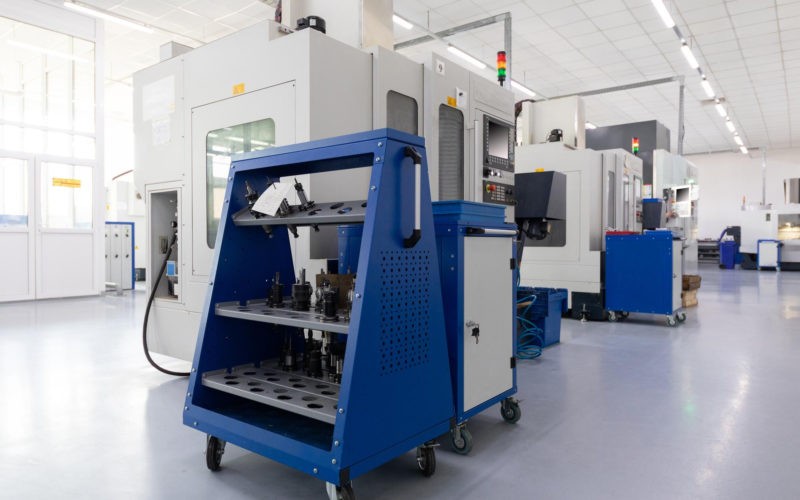The manufacturing industry is undergoing a transformation centered on precision. As global demand rises for cleaner cuts and faster turnaround, traditional machining methods can no longer deliver the consistency industries require. Heat-based cutting, in particular, often limits performance by distorting materials and reducing accuracy.
To overcome these barriers, manufacturers are embracing advanced technologies designed for precision and efficiency. Innovations such as waterjet, laser, and multi-axis CNC systems are transforming production floors worldwide. Each one offers unique strengths, enabling cleaner finishes, greater material efficiency, and higher output.
Here’s a closer look at four cutting innovations leading this shift.
1. Water Jet Cutting: Cold Precision for Every Material
Few innovations have changed industrial cutting like the water jet machine. Instead of relying on heat, it uses high-pressure water, sometimes mixed with abrasives, to slice through even the hardest materials. This process keeps surfaces smooth and intact, making it ideal for everything from aircraft panels to decorative stonework.
What makes waterjet cutting stand out:
- Cold cutting: No heat distortion or structural damage.
- Material flexibility: Works on metals, composites, glass, stone, rubber, and ceramics.
- Eco-conscious process: No toxic fumes or chemical waste.
- Clean finish: Precise edges that rarely need secondary polishing.
In addition to these core benefits, leading manufacturers are now redefining the industry standard for what a water jet machine can achieve. Their models now feature direct-drive pumps that harness more of the motor’s power for cutting, reducing both energy use and maintenance requirements.
These systems also include nozzles that are factory-aligned and individually tested, ensuring efficient material removal and long-term precision. Together, this encourages professionals to rethink how precision and sustainability can coexist on the modern factory floor.
2. Laser Cutting: When Speed and Accuracy Converge
Laser cutting is often the go-to for rapid, high-precision production. It works by directing an intense beam of light to melt or vaporize materials, resulting in sharp, clean lines with almost no manual intervention.
Here’s where it shines:
- Fast turnaround: High cutting speeds make it ideal for large production runs.
- Excellent edge quality: Minimal burring or deformation.
- Digital precision: CAD-driven control for intricate detailing.
However, there’s a trade-off. Lasers work best with thinner metals or plastics, while reflective or very thick materials can slow the process. That’s why many industries now pair laser systems with advanced automation for maximum output.
Laser cutting dominates fields like electronics, automotive design, and precision fabrication, where every fraction of a millimeter matters. When properly calibrated, it delivers not just accuracy, but consistency that defines world-class production.
3. Plasma and High-Definition Plasma Cutting
Plasma cutting has evolved from a heavy-duty tool into a refined industrial method capable of delivering both speed and quality. It works by channeling an electrical arc through compressed gas, turning it into plasma hot enough to slice through conductive metals.
Why it remains a staple in modern fabrication:
- Cost-effective: Ideal for medium and large-scale operations.
- Powerful: Cuts through thick steel and aluminum efficiently.
- Improved precision: High-definition systems now rival lasers in cut quality.
Plasma cutting’s strength lies in its balance between speed and affordability. It’s widely used in shipbuilding, construction, and heavy machinery manufacturing, where durable, large-scale metalwork is essential.
Recent advances in nozzle design and automation have pushed this technology into a new era. It’s now a space where even traditional workshops can achieve industrial-grade precision.
4. Multi-Axis and Hybrid CNC Systems
Multi-axis cutting represents the evolution of modern machining. By allowing tools to approach materials from multiple angles, it eliminates the need for constant repositioning. The result is faster, more flexible production with reduced human error.
Key advantages include:
- Complex geometry: Perfect for curved or intricate parts.
- Reduced downtime: Fewer setups mean faster cycles.
- Hybrid capability: Some machines integrate waterjet, laser, or milling in one platform.
This versatility makes 5-axis and hybrid CNC systems indispensable for aerospace, automotive, and custom engineering sectors. They combine automation with adaptability, helping businesses reduce material waste and improve repeatability.
As industries move toward smarter, leaner operations, hybrid CNC systems are leading the charge in connecting precision with productivity.
Wrapping Up
The cutting floor of the future looks nothing like the one from a decade ago. Every advancement, from laser speed to waterjet versatility, brings manufacturers closer to perfection in both process and product. Reputable brands have turned these innovations into a science, offering tools that help professionals elevate their craft.
In the end, the goal isn’t just to cut faster, but to cut smarter. By adopting technologies that combine precision, sustainability, and automation, manufacturers can meet modern challenges head-on and shape a cleaner, more efficient future for global production.












